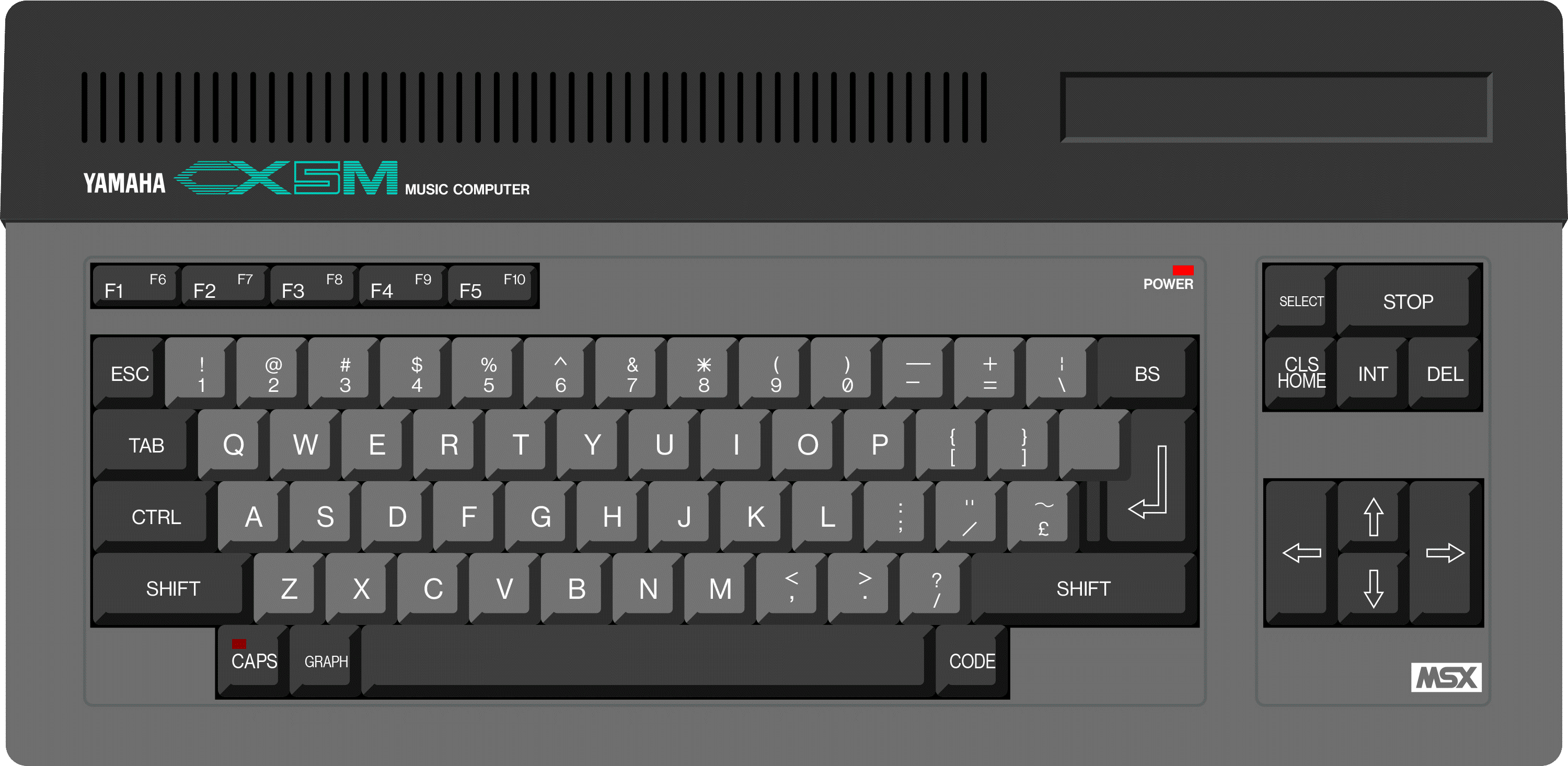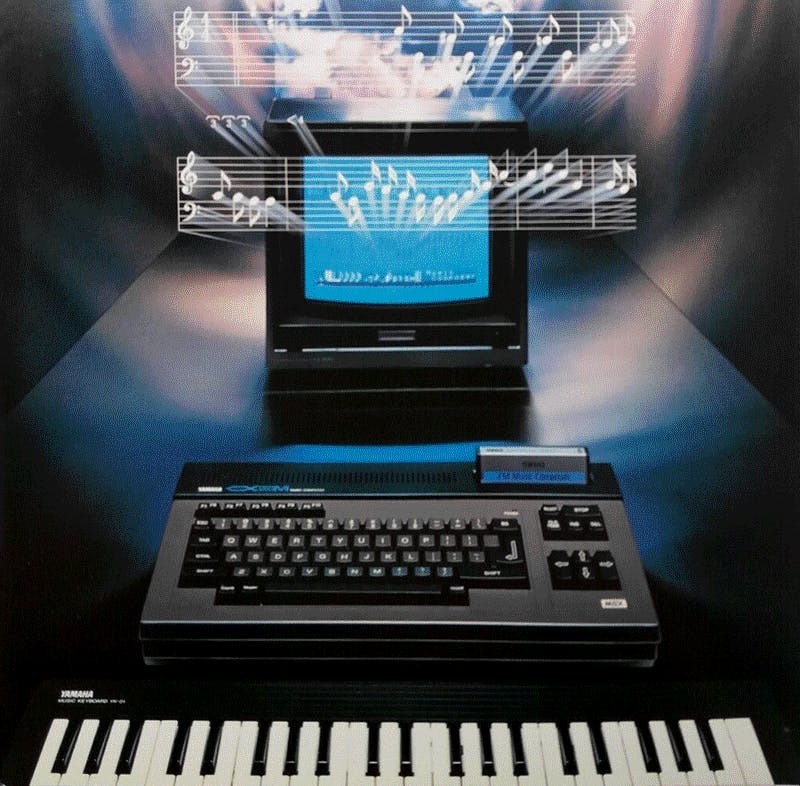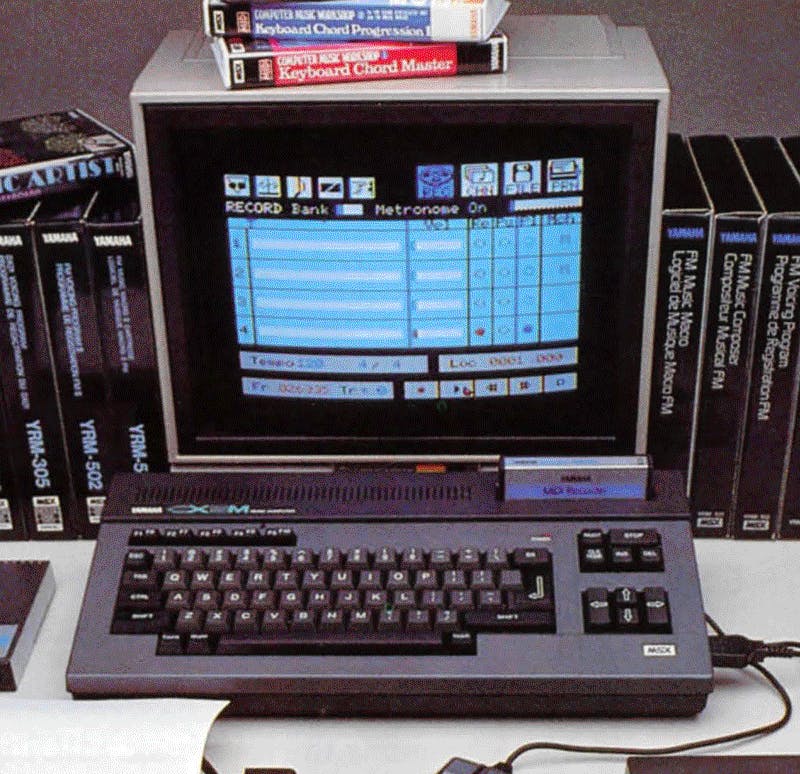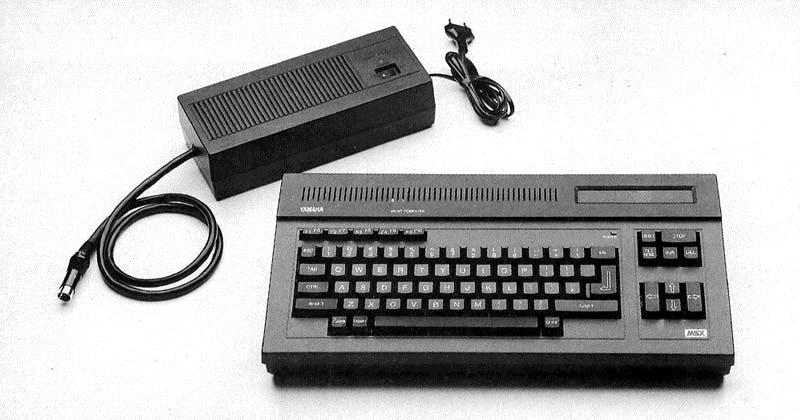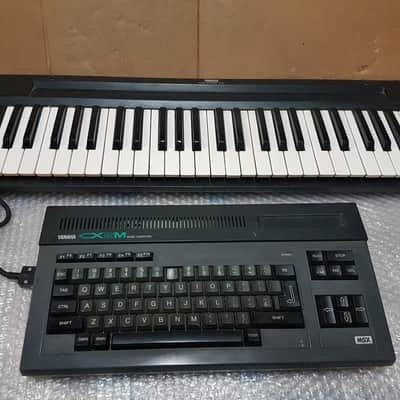1984
Initially sold for ¥59,800
In 1984 Yamaha made a computer, for music production. It's actually part of a broader push for home computing in Japan in the early 1980s, the MSX standard, that had a discrete success (especially in Japan) before IBM compatibles won the race. Many Japanese manufacturers, including Sony, Canon and Toshiba made similar computers but the CX5M while fully compatible with the standardized platform, had some music-related additions specifically created by Yamaha.
This is not Yamaha's first attempt to conquer the home computing market: the integrated system envisioned in 1982 around the PU1 didn't have much success however, and it was never released outside of Japan.
The CX5M is the international version of the CX5F, but multiple regional variations were released. For most of them, the power supply is a heavy external brick (and the cable to connect the computer is definitely too short) but the American (CX5MU) and Canadian (CX5MC) versions had an internal 120V power supply. Variations in video outputs exist as well. The keys are terrible: slider over rubber dome, linear switches with no resistance whatsoever when pressed. It's good plastic but it's a chore to type on.
The computer architecture is built around the Z80 microprocessor, with 32kB of RAM and 16kB of VRAM. It accepts standard MSX1 cartridges through the main upper slot. It runs a dialect of the Basic language (MSX Basic) and much like the Commodores or Sinclairs of the time it boots directly into a Basic command line. Although it does have a standard internal sound chip, a Yamaha YM5214 is provided for FM sounds.
The "music" part of this home computer is housed in a detachable expansion, the SFG01, which also provides stereo outputs, MIDI OUT and a keyboard connector. The computer can in fact be controlled via external keyboards (YK01, YK10, YK20) and send MIDI messages. In 1984 an upgrade was built for this expansion slot, the SFG05, which added a MIDI IN connector and improved the internal music software.
A music software is provided as part of the computer to control the internal sound chip (which is a 4op FM synthesizer not far from the DX21 capabilities). Up until the release of the C1 in the late 1980s, Yamaha expanded on this music system with many cartridges aimed at musicians, peripherals and add-ons.
